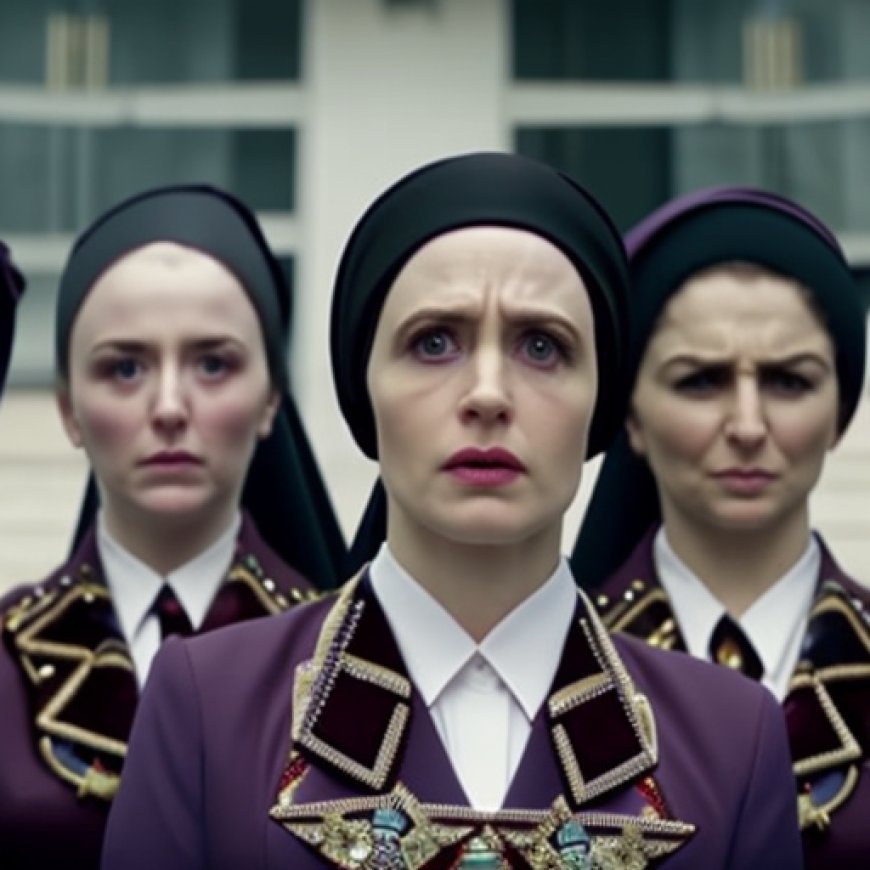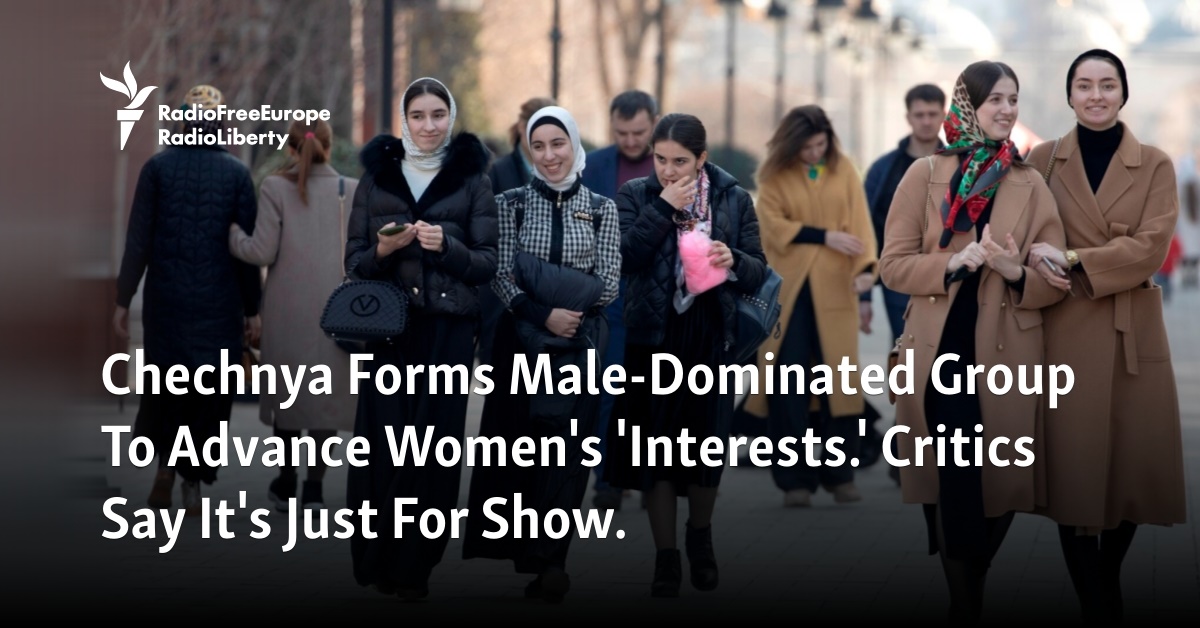Chechnya Forms Male-Dominated Group To Advance Women’s ‘Interests.’ Critics Say It’s Just For Show.
Chechnya Forms Male-Dominated Group To Advance Women's 'Interests.' Critics Say It's Just For Show. Radio Free Europe / Radio Liberty


The Government of Chechnya Establishes Council for Women’s Concerns

The government of Kremlin-backed Chechen leader Ramzan Kadyrov has formed an official council to advocate for women’s concerns. However, human rights activists argue that this move does not signify progress towards gender equality in the region, which has long been criticized for its treatment of women and minority groups, including the LGBT community.
The Council’s Mission and Unclear Plans
The council was established on October 1 to implement Russia’s 2023-2030 National Strategy of Actions in Women’s Interest. According to state news agency TASS, the strategy aims to improve women’s health and social welfare, expand their role in socioeconomic development, and involve them in public affairs. However, there is little information available about how the council plans to achieve these goals.
Chechnya’s Record on Women’s Rights
Rights activists argue that the status of women in Chechnya has deteriorated since Kadyrov became the region’s leader in 2007. He has proposed legalizing polygamy, condoned domestic abuse, allowed the kidnapping of a woman from a domestic violence shelter, imposed a mandatory dress code on women, and suppressed the voices of women who have raised concerns about societal issues. Additionally, there has been brutal intolerance towards lesbian and bisexual women.
Human rights activist Zainap Gashayeva, who now lives in Europe, stated that there have been numerous cases of suppressing women’s freedom of speech during Kadyrov’s rule. She questioned the sudden decision to establish a council to help women, considering the government’s previous actions.
The Composition of the Council
The council is comprised of senior government officials, including Kadyrov’s son-in-law Adam Alkhanov as the head of the group. Other members include Physical Fitness, Sports, and Youth Policy Minister Isa Ibragimov, Education Minister Khozh-Baudi Daaev, Labor Minister Usman Bashirov, Deputy Labor Minister Tamerlan Ibakov, National Policy, Foreign Relations, Information, and Press Minister Akhmed Dudayev, and Health Minister Suleiman Lorsanov.
Criticism and Doubts
Critics argue that the council is unlikely to address the real problems and issues faced by Chechen women. They believe that the council is merely a show to present a positive image of women’s rights in Chechnya. Activist Zainap Gashayeva commented that the council members have no genuine interest in addressing the challenges faced by women in the region.
Despite the concerns raised, it is important to avoid stereotyping women from the predominantly Muslim North Caucasus as passive victims of abuse. During Chechnya’s separatist wars, women played a crucial role in human rights work and activism.
The Need for Protection and the Paradox
In an environment where human rights organizations have been shut down or face threats and violence, some argue that Chechen women may benefit from a group that can protect them from arbitrary officials. However, there is skepticism about whether an organization created by the authorities can effectively defend women against the authorities’ own actions. This highlights the paradox of the situation.
Written by Elizabeth Owen based on reporting by Izabella Yevloyeva of RFE/RL’s Caucasus.Realities
SDGs, Targets, and Indicators Analysis
1. Which SDGs are addressed or connected to the issues highlighted in the article?
- SDG 5: Gender Equality
- SDG 10: Reduced Inequalities
- SDG 16: Peace, Justice, and Strong Institutions
2. What specific targets under those SDGs can be identified based on the article’s content?
- SDG 5.1: End all forms of discrimination against all women and girls everywhere
- SDG 5.2: Eliminate all forms of violence against all women and girls in the public and private spheres, including trafficking and sexual and other types of exploitation
- SDG 10.2: By 2030, empower and promote the social, economic, and political inclusion of all, irrespective of age, sex, disability, race, ethnicity, origin, religion, or economic or other status
- SDG 16.7: Ensure responsive, inclusive, participatory, and representative decision-making at all levels
3. Are there any indicators mentioned or implied in the article that can be used to measure progress towards the identified targets?
Yes, there are indicators mentioned or implied in the article that can be used to measure progress towards the identified targets. These include:
- Number of women appointed to positions of power and decision-making roles
- Number of policies and actions implemented to promote gender equality and women’s rights
- Number of cases of violence against women and girls reported and addressed
- Number of women’s rights organizations and human rights defenders operating in the region
Table: SDGs, Targets, and Indicators
| SDGs | Targets | Indicators |
|---|---|---|
| SDG 5: Gender Equality | 5.1: End all forms of discrimination against all women and girls everywhere | – Number of women appointed to positions of power and decision-making roles – Number of policies and actions implemented to promote gender equality and women’s rights |
| SDG 10: Reduced Inequalities | 10.2: By 2030, empower and promote the social, economic, and political inclusion of all, irrespective of age, sex, disability, race, ethnicity, origin, religion, or economic or other status | – Number of women appointed to positions of power and decision-making roles – Number of policies and actions implemented to promote gender equality and women’s rights |
| 10.3: Ensure equal opportunity and reduce inequalities of outcome, including by eliminating discriminatory laws, policies, and practices and promoting appropriate legislation, policies, and action in this regard | – Number of cases of violence against women and girls reported and addressed – Number of women’s rights organizations and human rights defenders operating in the region |
|
| SDG 16: Peace, Justice, and Strong Institutions | 16.7: Ensure responsive, inclusive, participatory, and representative decision-making at all levels | – Number of women appointed to positions of power and decision-making roles – Number of policies and actions implemented to promote gender equality and women’s rights |
Behold! This splendid article springs forth from the wellspring of knowledge, shaped by a wondrous proprietary AI technology that delved into a vast ocean of data, illuminating the path towards the Sustainable Development Goals. Remember that all rights are reserved by SDG Investors LLC, empowering us to champion progress together.
Source: rferl.org

Join us, as fellow seekers of change, on a transformative journey at https://sdgtalks.ai/welcome, where you can become a member and actively contribute to shaping a brighter future.







